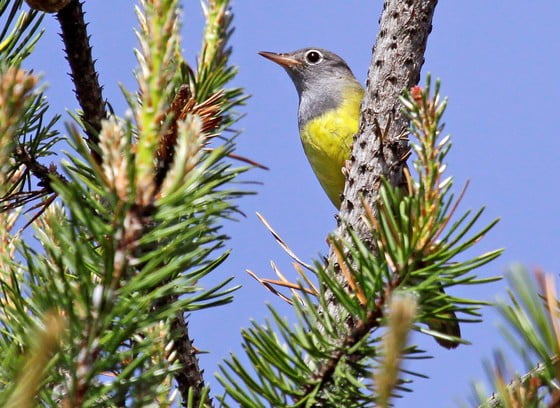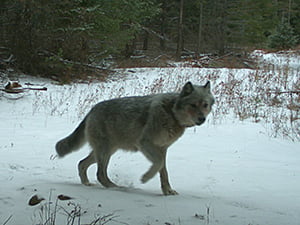
You already know that Interior is wild about urban areas, but did you know that since 2017, Interior’s U.S. Geological Survey and partners have provided over $4 million to support the Urban Waters Federal Partnership? This coalition of fifteen agencies works collectively in nineteen cities to reconnect communities with their waterways. Their important work includes reclaiming habitat for wildlife, improving water quality and providing recreational opportunities for urban residents. Check out some excellent examples below!
Albuquerque
Located just seven miles south of downtown Albuquerque on the Rio Grande River, Valle de Oro National Wildlife Refuge is the Southwest’s first urban wildlife refuge. The U.S. Fish and Wildlife Service is working to transform this 570-acre former dairy farm back to wildlife-friendly wetland ecosystems. USGS is helping by collecting groundwater and surface water monitoring data at the refuge before restoration, and will collect the same data during and after restoration activities. Why? Knowing more about the baseline status of water resources at the refuge will provide a better picture of the project’s success and guide future restoration efforts.
In a similar effort, USGS is also assessing restoration activities of an urban ecosystem where partners are revitalizing a four-acre parcel of land within city limits. Once the site is complete, it will include a Health Leadership High School, an urban farm and food hub, a farm-to-table restaurant, and a workforce training center–all connected by walking trails and surrounded by wetlands and habitat. Partners include the Albuquerque Metropolitan Arroyo Flood Control Authority, Bernalillo County, U.S. Army Corps of Engineers, U.S. Bureau of Reclamation, Economic Development Administration and EPA.

Valle de Oro National Wildlife Refuge. Photo by U.S. Fish and Wildlife Service.
New York City
In New York City, USGS is working with State and City agencies and local stakeholders to evaluate various types of green infrastructure systems that can keep stormwater pollution out of rivers. When rain falls in the city, it picks up trash, oil, animal droppings and other contaminants as it flows into storm drains and sewers. At one park along the Harlem River, USGS is collecting water samples to determine how effective green roofs and other measures are at removing contaminants from stormwater runoff. USGS and partners are also assessing whether street trees planted within the watersheds of the Harlem and Bronx Rivers can also help capture stormwater runoff, diverting it away from combined sewer systems. These and other projects are in cooperation with the city, the Interstate Environmental Commission and EPA.

Habitat assessment in the Bronx River. Photo by New York City Parks Department.
San Antonio
The San Antonio River runs through the city’s midtown and is its most popular tourist attraction. Over the next two decades, the city is projected to add two million people to its current 1.5 million population. This increasing urbanization (such as home and commercial construction, demolition, road construction and wastewater contributions) can result in more runoff, flash flooding, erosion and contaminants in streams and rivers. The EPA lists sediment as one of the most common pollutants in rivers, with nearly 70% of sediment pollution from human-accelerated erosion.
As part of the Urban Waters Federal Partnership, USGS is helping address these issues by tracking streamflow, turbidity, nitrate, and other properties of water in real time. By better understanding the timing and amount of these parameters in the river system, the city can better target management efforts to reduce their potential impacts.

San Antonio River Basin. Photo by Environmental Protection Agency.
Kansas City
Parks, urban trails, boat ramps and urban farms are ways that city residents can interact with nature, grow their own food, and improve their quality of life. In Kansas City, partners are working to introduce these amenities and USGS is gathering critical data to make such efforts possible. USGS is conducting an ecological assessment at the Kansas City Municipal Farm—a 400-acre site home to wetlands, waterways and forests right in the middle of the city. Restoring this parcel is the cornerstone project for the Middle Blue River Urban Waters Federal Partnership. Information gained from USGS research efforts will help the city know whether the site’s ponds are safe for urban agriculture irrigation, fishing and boating.
USGS is also assessing water quality, habitat, fish and macroinvertebrate communities on the Middle Blue River and several tributaries. The assessment will provide key information on the ecological health of the river, and where restoration efforts should be targeted.

Ariel view of Kansas City Municipal Farm. Photo by Angela Eley, City of Kansas City.
As the U.S. population continues to grow, so does the need to better reconcile nature and cities. These are just a few of the many ways USGS is helping restore urban waters and lands — helping provide ecological and recreational services to growing metropolitan populations.

